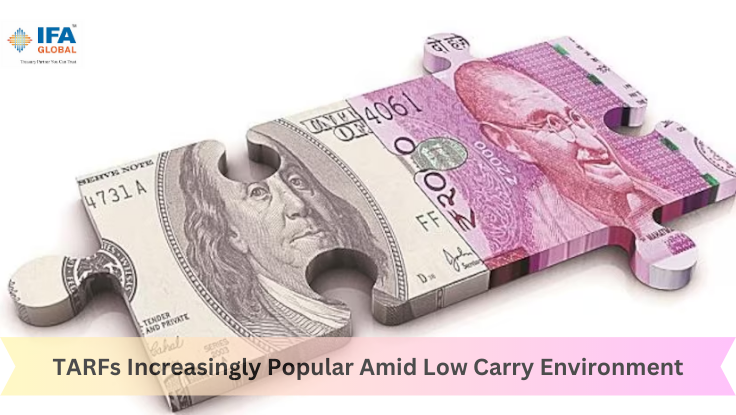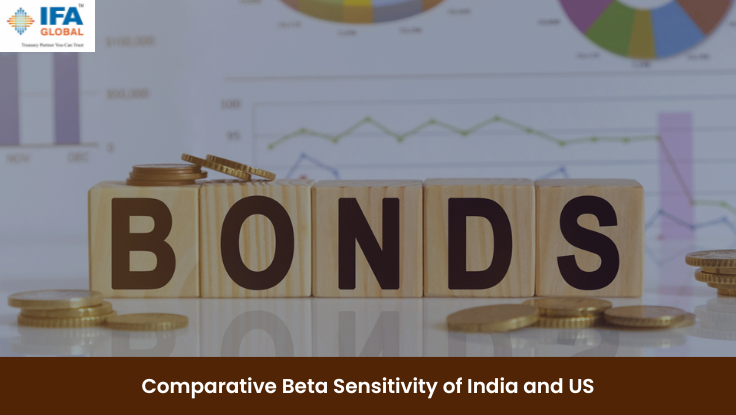7 Things You Need To Track To Form A Medium To Long-term View On The Rupee.
26 April 2021 | By IFA Global | Category - Markets

26 April, 2021
Short-term moves are driven by flows and positioning and can tend to be quite deceptive. In order to form a medium to long term view which is essential for evolving a consistent hedging strategy, it helps to look at the big picture. Below is a set of factors we track. Though these factors are intricately linked with one another, knowing them helps ensure that important developments and structural changes are not overlooked.
- The outlook on US Fed policy: It sets the incentives for risk-taking on the global stage. The Fed policy is mainly predicated on its two main objectives i.e. maximum employment and price stability. Lower short-term real rates in the US are supportive of global risk sentiment in general. The 2y real rate for instance is the 2y nominal yield minus the 2y breakeven (inflation expectations). India is vulnerable to US rate cycles. However, the Beta or sensitivity of USD/INR to the broad Dollar has come off over the years. The rupee is likely to be less vulnerable to US hike cycles, given the buffer of Reserves we now have.

- Domestic Capital Account Dynamics: Foreign Portfolio flows are the volatile component of Capital account. A dovish Fed policy is positive for EM assets in general. However, the relative performance of the Rupee would depend on whether FPIs are overweight or underweight in India. Trends in FDI and overseas capital raising are also important to track. For example; the trade-off between borrowing in Rupee and borrowing in Dollar, Liberalization of FDI norms or ECB norms, unhedged corporate ECB exposures.

- Domestic Current Account Dynamics: While the import of intermediate goods may not be a worrying sign, persistent increases in imports related to final consumption are a cause for concern. It underscores a weakness in domestic manufacturing. Net Remittances from abroad and Service sector exports are also important to track.

- RBI reaction function: Besides being a policymaker, the Central Bank is a key market participant as well, and therefore what its intent is, is extremely important. The current RBI regime seems to be focused on correcting Rupee overvaluation while containing volatility. Therefore, during times of broad Dollar weakness, it has absorbed inflows to bolster its reserves. Besides the Reserve number, RBI's forward book is also equally important to follow. Abundant banking system liquidity compelled the RBI to sterilize its intervention by pushing FX purchases forward. Tracking the REER and CNY/INR, in particular, is important. Reserves to external debt and Reserves in terms of import cover are popularly used to assess India's external position.

- Domestic inflation and Real rates: In a backdrop of overall positive risk sentiment, low real rates would be seen as supportive of growth and would therefore result in inflows into equities. Higher inflation on supply-side woes or higher crude prices and consequent low real rates would be negative for the Rupee.

- Reforms and Productivity: Structural Measures that improve efficiency for businesses i.e. lower their operating costs would be positive for the Rupee in the long run. Rationalization of taxes and better compliance, formalization of the economy, better infrastructure, land, labor, and capital market reforms are important. Measures which foster innovation and entrepreneurship are also positive for the Rupee. Tariffs, quotas, subventions, subsidies are protectionist measures that can help over the short term but are counterproductive in the long run. The share of CAPEX as a part of the total budgeted expenditure is important to track. Execution of Capital projects is also important. Time and cost overruns, the stress in credit conditions, rising NPAs in the banking system are warning signs.

- Government, Household, and Corporate debt: If the government borrowing and expenditure does not translate into growth, the debt becomes unsustainable and that can impinge on the Rupee. The quality of expenditure, as highlighted in the point above is therefore very crucial. The government's commitment to fiscal discipline and perceptible steps in that direction is important. The ability of banks and financial institutions to ensure that capital is deployed optimally is important. Inefficient use of capital can trigger a downward spiral that can prove to be extremely debilitating for the economy. This has been a chronic problem in India's case.





